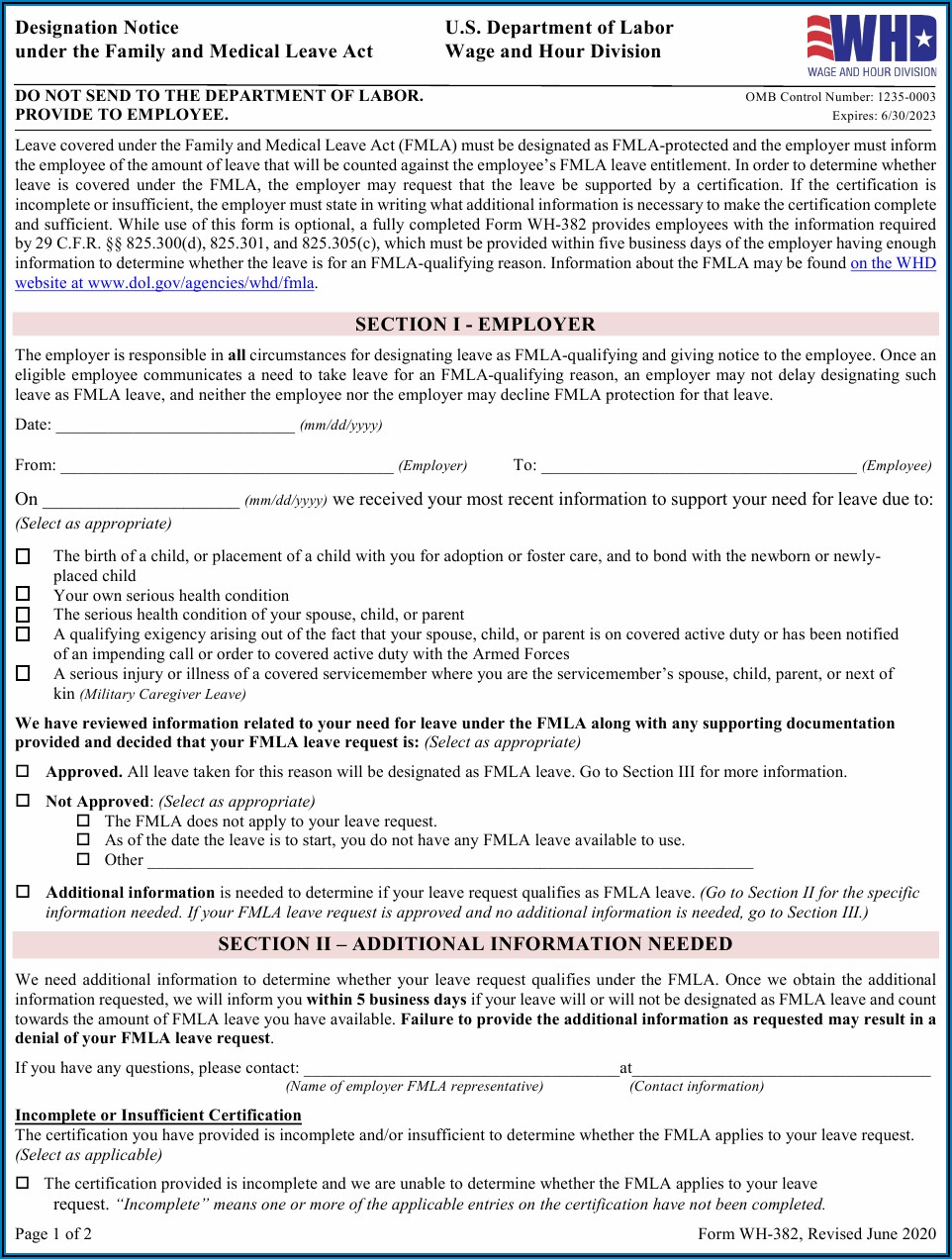5 Essential Things to Include on FMLA Paperwork

Overview of FMLA Paperwork

The Family and Medical Leave Act (FMLA) is a cornerstone of employee benefits in the United States, offering job protection for those who need to take leave for medical or family reasons. For employers and employees alike, understanding the essential elements of FMLA paperwork is crucial to ensure a smooth leave process. Here, we explore what exactly constitutes necessary documentation for FMLA leave.

1. Certification of Health Care Provider

The core of FMLA paperwork starts with the Certification of Health Care Provider (Form WH-380) for either the employee or their family member. Here’s what this document includes:
- Patient Information: Full name, date of birth, and relationship to the employee.
- Nature of the Medical Condition: Detailed description, including diagnosis, treatment plan, and expected duration of incapacity.
- Leave Requirements: The frequency and duration of the leave, necessary treatments, or follow-up appointments.
- Signature and Date: The form must be signed and dated by a licensed health care provider.
❗ Note: Make sure that the form is signed by a qualified health care provider. HR departments may require re-certification for continued eligibility if the medical condition warrants it.
2. Employee’s Request for Leave

Employees must formally request FMLA leave. This request should include:
- Type of Leave: Specify whether it’s for personal health, caring for a family member, or other qualifying events like military family leave.
- Estimated Leave Duration: An approximate start and end date, or if intermittent leave, the expected frequency.
- Other Relevant Details: Any additional information that supports the need for leave, such as evidence of serious health conditions or care responsibilities.
| Leave Type | Eligibility | Documentation Needed |
|---|---|---|
| Serious Health Condition | Own or Family Member | Medical certification from a health care provider |
| Birth or Care of Newborn | Biological Parent or Adoptive Parent | Documentation of the birth, adoption, or foster care placement |
| Qualifying Military Exigency | Active Duty or Called-to-Active-Duty | Documentation supporting the need for leave |
| Care for Covered Service Member | Serious Injury or Illness | Documentation from the military or a medical provider |

3. Employer’s Response

Once an employee submits their request, the employer must respond:
- Eligibility Notice: Inform the employee if they are or are not eligible for FMLA leave.
- Rights and Responsibilities: Provide a notice detailing the employee’s rights, responsibilities, and any conditions for taking the leave.
- Designation Notice: Inform whether the leave will be counted as FMLA-qualifying leave.
4. Tracking Leave Taken

To manage leave effectively, both employers and employees must:
- Track Leave: Keep accurate records of leave taken to ensure compliance with FMLA regulations.
- Substitution Policy: Clearly communicate if paid leave like sick or vacation days will substitute for FMLA leave.
- Coordination: Coordinate the leave with company policies and other laws, ensuring no conflict or confusion.
📝 Note: For intermittent leave or reduced work schedules, tracking becomes particularly important to ensure compliance and avoid overstepping.
5. Return to Work Requirements

Preparing for the return of employees on FMLA leave includes:
- Clear Communication: Discuss the expected return date and any job reinstatement conditions.
- Fitness-for-Duty Certification: Depending on the leave reason, a certification from a health care provider might be needed to confirm the employee’s ability to return to work.
- Job Reinstatement: Ensure that the employee can return to their original or an equivalent position with equivalent benefits, pay, and conditions.
Summing up, FMLA paperwork is vital for both employees and employers to navigate leave requests effectively. Proper documentation, including the Certification of Health Care Provider, an employee’s formal leave request, and meticulous tracking of leave time, ensures compliance with FMLA guidelines. Clear communication about rights and responsibilities, coupled with a smooth return-to-work process, contributes to a supportive work environment, fostering employee trust and satisfaction.
What constitutes a “serious health condition” under FMLA?

+
A serious health condition under FMLA includes illnesses, injuries, impairments, or physical or mental conditions that involve inpatient care in a hospital, hospice, or residential medical care facility, or continuing treatment by a health care provider.
Can FMLA leave be taken intermittently?

+
Yes, FMLA leave can be taken intermittently or on a reduced leave schedule when medically necessary for the employee’s or family member’s serious health condition.
How do employees handle their health benefits while on FMLA leave?

+
Employers must maintain the employee’s group health insurance coverage under the same terms as if the employee continued to work. Employees might need to continue to pay their share of the premium while on leave, and failure to do so might lead to termination of coverage.